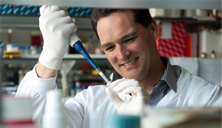Photogallery
Login
Archives
ABSTRACT
Effect of two different bleaching techniques on fracture toughness of two bulk fill composite materials: an in vitro study
YasmineTarek Ahmed, Issa Abu Amara, Ali Almudawi, AlaaHashim, EylafHelmi, NouraAlDossari, HanadiAlqahtani, NouraAlSubaie
ABSTRACT
Aim The aim of this study is to evaluate the effect of two different bleaching techniques on fracture toughness of two bulk fill composite materials. Materials and Methods Seventy two disks shaped specimens (10mm x 4 mm) of two bulk-fill resin composites: FiltekBulkFill Posterior (3M ESPE, St. PAUL, MN, USA) and Tetric N-Ceram Bulk Fill (IvoclarVivadent, Schaan, Liechtenstein) each group contains 36 sampleswere used. Fracture toughness was evaluated after the application of both bleaching protocols. In-office bleaching opalescence boost 40% (hydrogen peroxide)and home bleaching opalescence 20% (carbamide peroxide). Data collected were analyzed using the Statistical Package for the Social Sciences (Version 23.0, SPSS, Chicago, IL, USA). Results There was no statistically significant difference in fracture toughness between office bleaching (hydrogen Peroxide) and home bleaching (carbamide peroxide)(p>0.05). Fracture toughness was not affected after bleaching(at home or in office). Conclusions Feltik had a significantly higher fracture toughness value than the Tetric N-Ceram. Bleaching had a significant effect in increasing the fracture toughness value on Filtek Supreme Plus but not on theTetric N-ceram. The practice of bleaching after placement of the composite restoration does not compromise the fracture toughness of the resin composites tested.
[Full Text Article]
